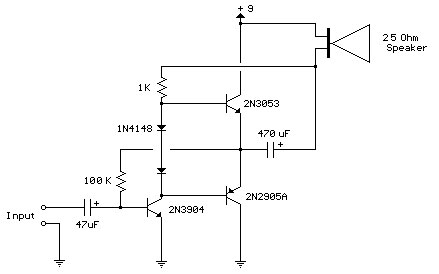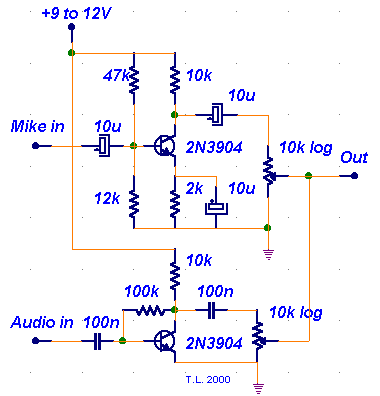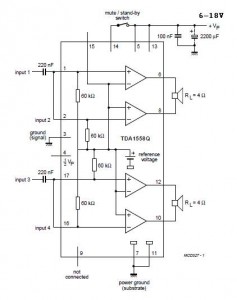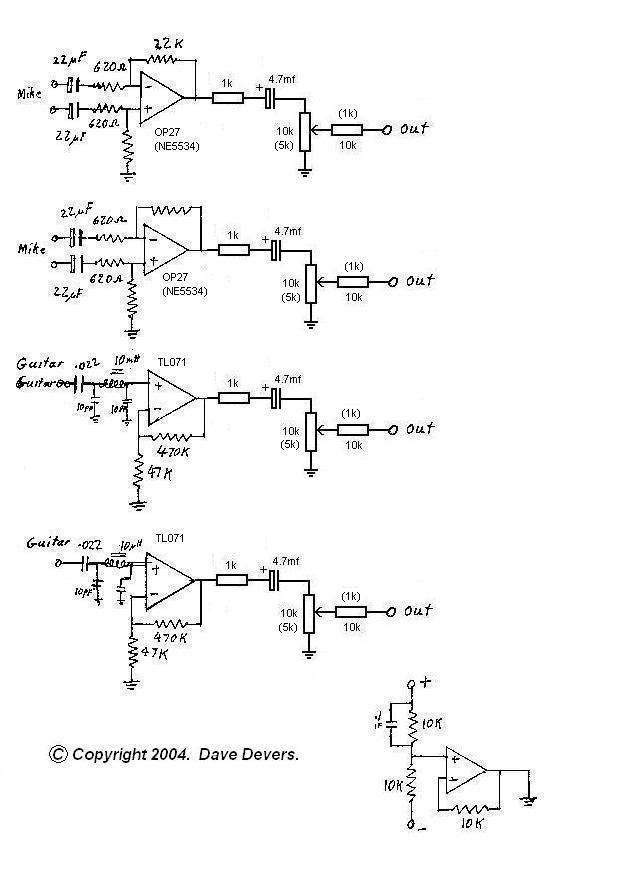
audio preamplifier
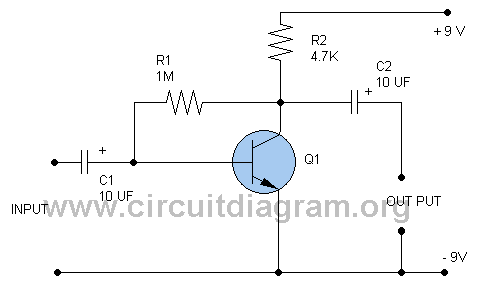
Nowadays, audio signal preamplifiers are utilized in numerous electronic devices. There are various types of audio preamp circuits, ranging from simple to complex designs. This document presents an effective design of a compact signal preamplifier circuit, which is ideal for enhancing weak audio signals. The circuit employs a high-gain transistor, specifically the BC184. Resistor R1 contributes to temperature stabilization through negative feedback and enhances frequency response while increasing the impedance to 48k ohms. The transistor Q1 draws 1 milliampere from a 9-volt battery.
The described audio signal preamplifier circuit is designed to amplify weak audio signals, making it suitable for applications such as microphones, musical instruments, and other audio sources. The choice of the BC184 transistor is significant due to its high gain characteristics, which allow for substantial amplification of low-level signals.
The circuit configuration typically includes input and output capacitors to block DC offsets while allowing AC audio signals to pass through. The use of a resistor, labeled as R1, plays a critical role in stabilizing the circuit's operation by providing negative feedback. This feedback mechanism helps to maintain a consistent gain across varying temperatures and signal levels, ensuring reliable performance.
The impedance increase to 48k ohms is advantageous as it allows the circuit to interface effectively with various audio sources without loading them down, which could result in signal loss. The power supply for the circuit is a 9-volt battery, which is a common choice for portable audio devices, providing sufficient voltage while maintaining compactness.
This preamplifier circuit can be further enhanced by incorporating additional components such as capacitors for filtering, diodes for protection against reverse polarity, and potentiometers for adjustable gain settings. The overall design is compact, making it suitable for integration into various electronic devices where space is a constraint.Now day`s audio signal preamp is used in many electronic devices. There are many types of audio preamp circuits from simple to complicated big circuits. Here we are showing you a very good design of a small circuit of signal preamplifier. circuit is best for providing extra gain to weak audio signals. In this circuit the transistor used is a high gain transistor bc 184, resistor 1 provides the temperature stabilization due to negative feed back and improves frequency response. It also increases impedance to 48K ohms. Transistor Q1 draws 1 milliampere from 9 volt battery. 🔗 External reference
The described audio signal preamplifier circuit is designed to amplify weak audio signals, making it suitable for applications such as microphones, musical instruments, and other audio sources. The choice of the BC184 transistor is significant due to its high gain characteristics, which allow for substantial amplification of low-level signals.
The circuit configuration typically includes input and output capacitors to block DC offsets while allowing AC audio signals to pass through. The use of a resistor, labeled as R1, plays a critical role in stabilizing the circuit's operation by providing negative feedback. This feedback mechanism helps to maintain a consistent gain across varying temperatures and signal levels, ensuring reliable performance.
The impedance increase to 48k ohms is advantageous as it allows the circuit to interface effectively with various audio sources without loading them down, which could result in signal loss. The power supply for the circuit is a 9-volt battery, which is a common choice for portable audio devices, providing sufficient voltage while maintaining compactness.
This preamplifier circuit can be further enhanced by incorporating additional components such as capacitors for filtering, diodes for protection against reverse polarity, and potentiometers for adjustable gain settings. The overall design is compact, making it suitable for integration into various electronic devices where space is a constraint.Now day`s audio signal preamp is used in many electronic devices. There are many types of audio preamp circuits from simple to complicated big circuits. Here we are showing you a very good design of a small circuit of signal preamplifier. circuit is best for providing extra gain to weak audio signals. In this circuit the transistor used is a high gain transistor bc 184, resistor 1 provides the temperature stabilization due to negative feed back and improves frequency response. It also increases impedance to 48K ohms. Transistor Q1 draws 1 milliampere from 9 volt battery. 🔗 External reference

